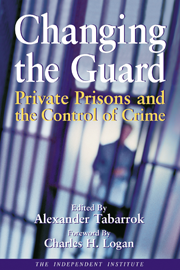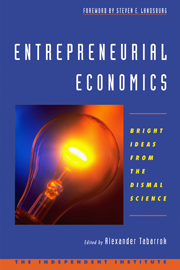The recent gyrations in the stock market have led to a chorus of I told you so’s from opponents of social security privatization. Responding to the drop of several months ago, Robert Reich, the former Labor Secretary, crows that it "has taken the wind out of privatization." The drop is a "reality check" for those pushing for privatization according to Joe Ervin, political director of the National Council of Senior Citizens. Opponents of privatization in Congress seem positively gleeful, Jim McDermott, (Rep., D-Wash.) says the drop is "serendipitous" and is glad of the "ammunition" it provides for the anti-privatization forces. Nevermind that the market has recently recovered, none of this should be taken very seriously. The arguments for privatization are not based on the short run movements of the market whether those movements are in the up or down direction.
Over the past 50 years the annual real rate of return on the S&P 500 has been 9.5 percent. Depending on the exact time period and stock market index, returns have been somewhat higher or lower than on the S & P 500. But a 7 to 8 percent rate of return is a reasonable forecast of what investors in a broad index over say a 30 year time period can expect from a privatized social security system. In contrast, today’s young workers can expect a negative rate of return from social security. On a present value basis, a young worker can expect a mere 50 cents of benefits for every dollar of taxes paid into the system. Yet even over the 1928 to1957 period, the worst 30 year period for stocks since 1926, a worker would have received $5.79 in present value benefits for every dollar paid into the market. Astoundingly, these figures make social security look even better than it probably will be because they assume that future benefits will not be lowered and current taxes not raised, an outcome now considered to be impossible.
Some opponents of privatization recognize that it offers workers much higher rates of return over the long run but they worry that a market drop could "devastate" a worker on the verge of retirement. No one wants to wake up on their 65th birthday to find that their nest egg has dropped in value by 20% but in a paper for the Cato Institute Melissa Hieger and William Shipman calculate that even if a worker were unlucky enough to withdraw his lifetime savings on the day of a terrible market crash the chances that his total return would be lower than that offered by social security are almost nil. Even more fundamentally, the tragic figure of the Black Monday retiree is absurd. Why would anyone liquidate all their savings on a single day, especially on a day like Black Monday? To avoid precipitous declines, investors in a privatized system can do what most financial experts advice and slowly reduce the percentage of their assets held in stocks as they near retirement. Market risks can be managed through a judicious choice of financial instruments. But what can current workers do to avoid the risk that politicians will raise their payroll taxes, cut their future benefits, or raise the retirement age? Politicians who claim that social security benefits are risk free are selling stock in a more fraudulent enterprise than any the SEC would tolerate.
Defenders of the current system like to refer to social security taxes as "contributions" which "accumulate" thereby creating the worker’s "pension savings." Of course, all this is nonsense. With the exception of a small surplus, all of the revenues from social security taxes are immediately paid out to current retirees. Privatizing social security, however, will increase national savings. At first the increase in savings will be small because of the necessity of paying current and some future retirees, but as the transition to a privatized system is completed net savings will increase. A higher savings rate will raise national income and permanently increase the rate of economic growth. Economist Martin Feldstein of Harvard University estimates that the higher savings of a privatized system plus the elimination of inefficient payroll taxes could increase national wealth by 10 to 20 trillion dollars. No other policy promises anything like the increase in living standards made possible by a privatized social security system.
The arcane and Byzantine rules governing social security ensure that for most workers there is little connection between what they pay in taxes and what they take out as benefits. One result is that social security reduces the incentive to work another is that wealth is redistributed in unintended ways which are difficult to defend. Why should two singles pay more of the social security burden than a married couple with the same total income? Would the taxpayers vote for such a redistribution if they knew of its existence? Probably not. Yet calculations by Eugene Steurle of the Urban Institute show that social security will impose a burden on singles more than three times as high as the burden imposed on the married couple (On a present value basis, young singles and young married couples of average income will both pay hundreds of thousands of dollars more in taxes than they will ever receive in social security benefits.) Arbitrary wealth redistribution is not an accident of the current system, it is an almost inevitable result of any system in which workers don’t own their savings.
Whether the stock market is up or down, if we begin the process of privatization now, future generations will remark on our wise planning and foresight. But if we throw away trillions of dollars and the chance to establish a more equitable system because of a few fluctuations in the market, future generations will wonder incredulously at our folly.












